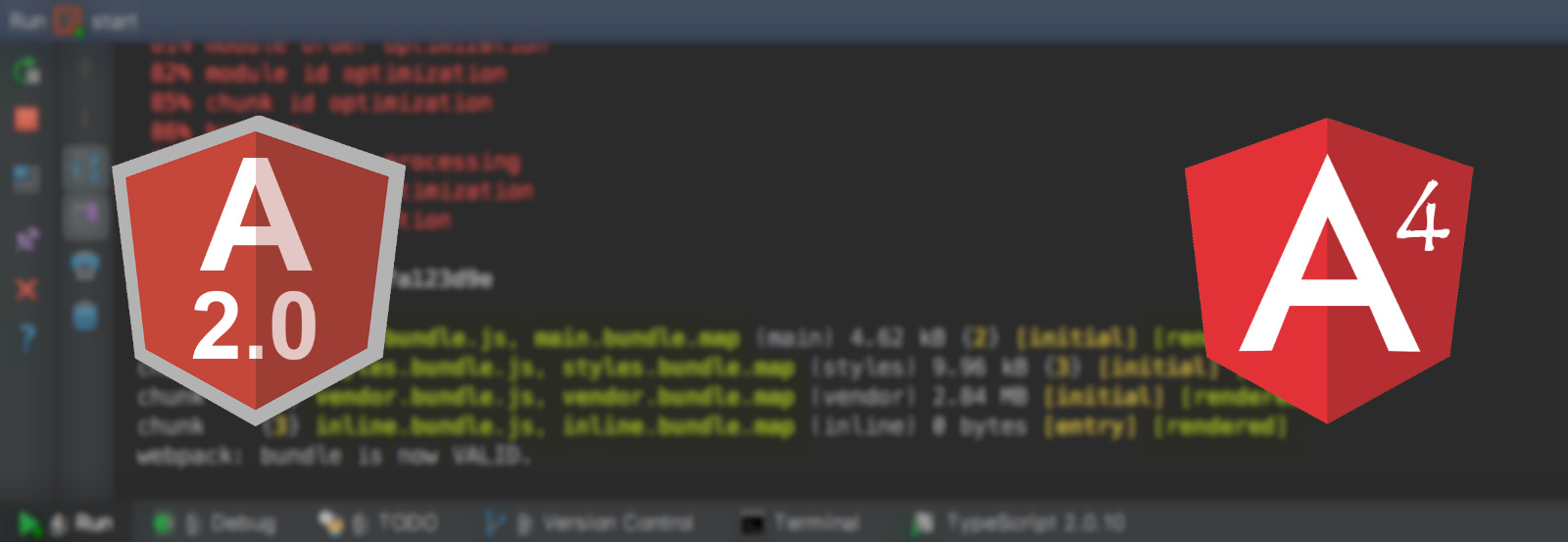Upgrading Your Application to Angular 2 to Angular 4
Earlier this year, Angular 4 was released. This was a much-awaited upgrade to the open-source programming language. Now that we have the version 4 live, the question remains whether or not you should upgrade to this new version. Here are reasons you should upgrade your Angular 2 project to Angular 4.

It is comparatively smaller: Apps over Angular 4 will occupy less space on your device. The apps will be faster as they have been tweaked for performance.
Better ngIF and for With Angular 4, you have new syntaxes for template binding. You can use If and For functions when defining the local variables. You can add the loading screen when your data loads with the if/for functions.
Animation: With Angular 4, adding animations will become easy. You can use the main modules to import the BrowserAnimationModule in order to add animations to your program. You can find documentation with ease with the animation package that is available with Angular 4.
View Engine: This is one of the under-the-hood improvements made to Angular 4. The code size has reduced effectively with this new change added to the new version of Angular. You can delve into complex templates without increasing the size of the code. This will effectively reduce the production bundles. There will be a reduction of 100 kilobytes with this feature. So if you have some ahead of time generated code, you can upgrade it to Angular 4 and see how the production bundles grow thinner.
The Angular Universal: With Angular 4’s universal, you can run the project on the server. You can make sure the Angular project is up-to-date. It is a community supported feature and will offer all hacks whenever you are stuck.
How to Upgrade
Here are the steps to upgrade from Angular 2 to Angular 4
Step 1: Upgrade the dependencies in your project to Angular 4.
Linux/Mac
| npm install @angular/{common,compiler,compiler-cli,core,forms,http,platform-browser,platform-browser-dynamic,platform-server,router,animations}@latest typescript@latest –save |
Windows
| npm install @angular/common@latest @angular/compiler@latest @angular/compiler-cli@latest @angular/core@latest @angular/forms@latest @angular/http@latest @angular/platform-browser@latest @angular/platform-browser-dynamic@latest @angular/platform-server@latest @angular/router@latest @angular/animations@latest typescript@latest –save |
Step-2: Run ng-serve command. Check the registration form
Step-3: Rename the templates to
Step-4: Convert all Angular module versions to 4.x
Step-5: Run ng Serve
There, you have upgraded your app to Angular 4. Overlook the errors and warnings that come up while upgrading.
Seashore Partners are experts in AngularJS Development Services. We have experts who can upgrade your apps to Angular 4, and get you started with the latest features and functionality. Are you ready for the upgrade? Connect for a quick quote.
Earlier this year, Angular 4 was released. This was a much-awaited upgrade to the open-source programming language. Now that we have the version 4 live, the question remains whether or not you should upgrade to this new version. Here are reasons you should upgrade your Angular 2 project to Angular 4.
It is comparatively smaller: Apps over Angular 4 will occupy less space on your device. The apps will be faster as they have been tweaked for performance.
Better ngIF and for With Angular 4, you have new syntaxes for template binding. You can use If and For functions when defining the local variables. You can add the loading screen when your data loads with the if/for functions.
Animation: With Angular 4, adding animations will become easy. You can use the main modules to import the BrowserAnimationModule in order to add animations to your program. You can find documentation with ease with the animation package that is available with Angular 4.
View Engine: This is one of the under-the-hood improvements made to Angular 4. The code size has reduced effectively with this new change added to the new version of Angular. You can delve into complex templates without increasing the size of the code. This will effectively reduce the production bundles. There will be a reduction of 100 kilobytes with this feature. So if you have some ahead of time generated code, you can upgrade it to Angular 4 and see how the production bundles grow thinner.
The Angular Universal: With Angular 4’s universal, you can run the project on the server. You can make sure the Angular project is up-to-date. It is a community supported feature and will offer all hacks whenever you are stuck.
How to Upgrade
Here are the steps to upgrade from Angular 2 to Angular 4
Step 1: Upgrade the dependencies in your project to Angular 4.
Linux/Mac
| npm install @angular/{common,compiler,compiler-cli,core,forms,http,platform-browser,platform-browser-dynamic,platform-server,router,animations}@latest typescript@latest –save |
Windows
| npm install @angular/common@latest @angular/compiler@latest @angular/compiler-cli@latest @angular/core@latest @angular/forms@latest @angular/http@latest @angular/platform-browser@latest @angular/platform-browser-dynamic@latest @angular/platform-server@latest @angular/router@latest @angular/animations@latest typescript@latest –save |
Step-2: Run ng-serve command. Check the registration form
Step-3: Rename the templates to
Step-4: Convert all Angular module versions to 4.x
Step-5: Run ng Serve
There, you have upgraded your app to Angular 4. Overlook the errors and warnings that come up while upgrading.
Seashore Partners are experts in AngularJS development. We have experts who can upgrade your apps to Angular 4, and get you started with the latest features and functionality. Are you ready for the upgrade? Connect for a quick quote.
AngularJS Development Services
AngularJS Development Company


 Seashore
Seashore







